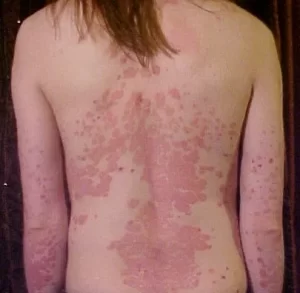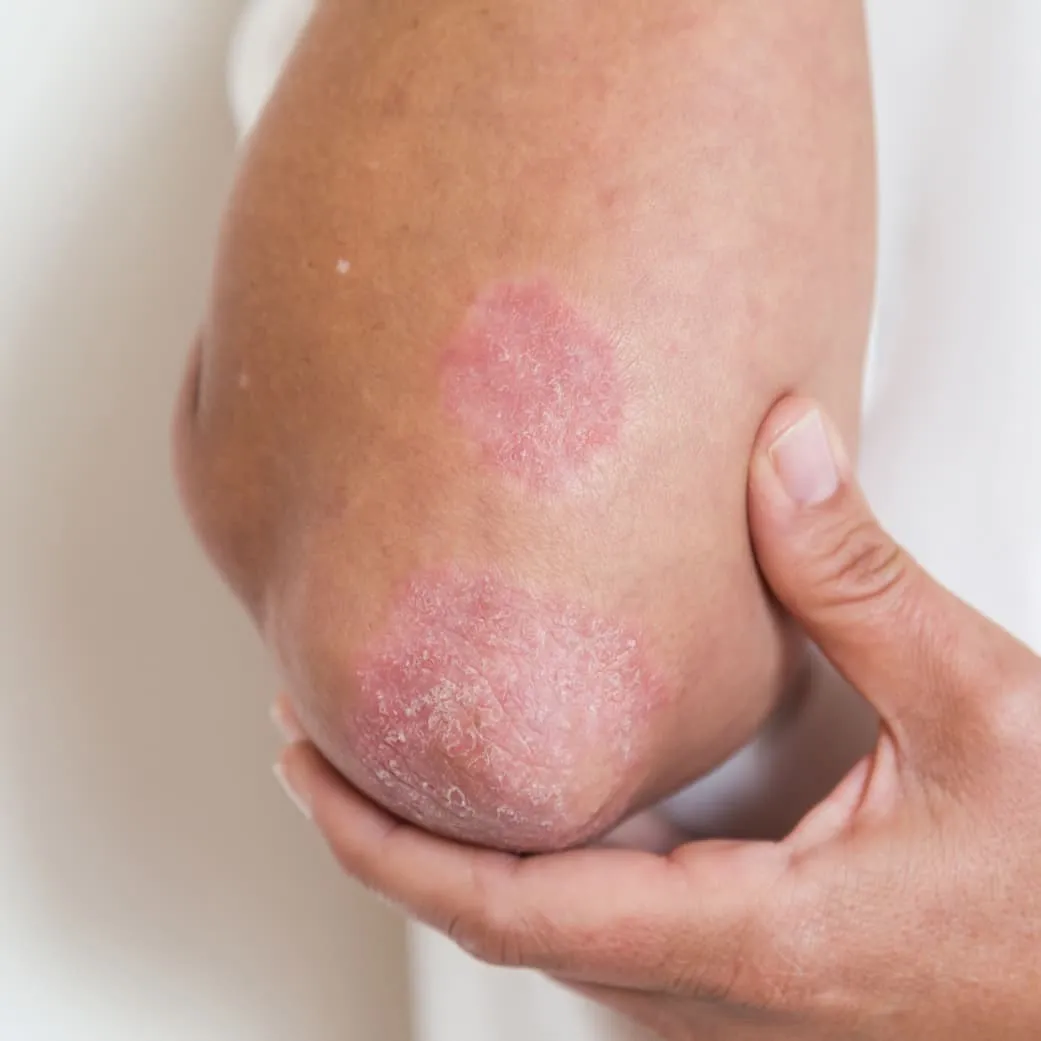Psoriasis is a chronic autoimmune disorder that accelerates cell production in the epidermis, leading to thickened skin, scales, and redness. This condition affects 3% of adults in the United States, totaling over 7.5 million people. It is linked to various other illnesses, including psoriatic arthritis, cardiometabolic issues, and mental health disorders, significantly impacting quality of life and posing substantial economic burdens.
Symptoms
Psoriasis results in thick, red skin patches covered with silvery scales, typically occurring on the elbows, knees, scalp, and lower back. Removing these scales can cause bleeding. Nail involvement occurs in up to 50% of cases, manifesting as pitting, separation from the nail bed, oil spots, nail dystrophy, and an accumulation of cells under the nails. Approximately 30% of patients develop psoriatic arthritis after a decade.
Classification
Psoriasis is categorized based on skin cell changes and appearance, with patients often having multiple types.
– Plaque Psoriasis: The most prevalent type, found in 80-90% of cases. It features distinct red plaques with silvery scales, primarily affecting the scalp, trunk, and limb extensors. Symmetrical lesions can lead to severe impairment when they are present on the palms, soles, or joint lines.
– Pustular Psoriasis: Marked by pus filled blisters on the psoriatic skin lesions.
– Nail Psoriasis: Can occur with any type of psoriasis, causing dents and nail separation of fingernails and/or toenails.
– Guttate Psoriasis: Affects fewer than 2% of cases, mainly individuals under 30. Triggered often by streptococcal infections, it presents as small, pink, drop-like lesions.
– Erythrodermic Psoriasis: Involves extensive skin redness.
– Inverse Psoriasis: Occurs in skin folds, such as underarms and genitals.
Risk Factors and Causes
While the precise cause of psoriasis remains unknown, it involves both external and internal factors. Important environmental triggers include mechanical stress, which may cause lesions after injury and exposure to pollutants like polycyclic aromatic hydrocarbons from forest fires and tobacco smoke. UV exposure can also cause oxidative stress, exacerbating psoriasis. Certain infections, such as streptococcal throat infections, are linked to guttate psoriasis. Lifestyle factors like smoking and alcohol use are associated with both the onset and worsening of the condition. A genetic predisposition plays a significant role, with 30-40% of sufferers having a close family member also affected. The PSORS1 locus on chromosome 6p21, particularly the HLA-C gene, is closely linked to psoriasis development. Obesity, high blood pressure, and mental stress are other contributing internal factors.
Diagnosis
Diagnosis is typically based on a physical examination of the skin, scalp, and nails for signs of psoriasis. Doctors may inquire about symptoms like skin itching, discomfort, fever, or joint pain, even without psoriatic arthritis. They may also consider recent illnesses, stress levels, medications, and family history. To differentiate psoriasis from other skin disorders, a skin biopsy might be performed.
Treatment
While there is no cure for psoriasis, various effective treatments exist. For mild to moderate psoriasis, initial treatment involves topical therapies, often managed by a primary care physician. If topical treatment proves insufficient or impractical, a referral to a dermatologist might be warranted for more comprehensive care. Systemic treatments can be considered in such cases, potentially used alongside topical solutions. Treatments like Methotrexate, which inhibits the immune response and reduces cell proliferation, were a common option but are now becoming less common with the invention of biologics. Oral retinoids, related to vitamin A, can also be beneficial, particularly for more severe cases, and may be paired with light therapy. If psoriatic arthritis is present, treatment should be coordinated with a rheumatologist for optimal care.
Psoriasis is a chronic autoimmune condition that affects the skin, often causing discomfort and impacting daily life. While there is no cure, a variety of effective treatments are available, from topical therapies for mild cases to systemic medications for more severe forms. Early diagnosis and a tailored treatment plan can help manage symptoms and improve quality of life. It’s important to work closely with healthcare providers to find the right approach for your specific needs.







